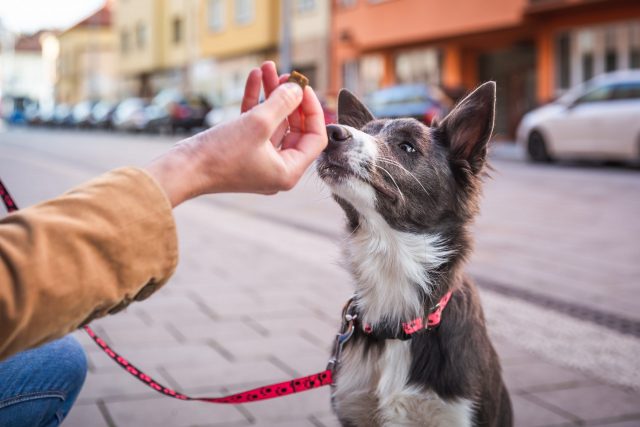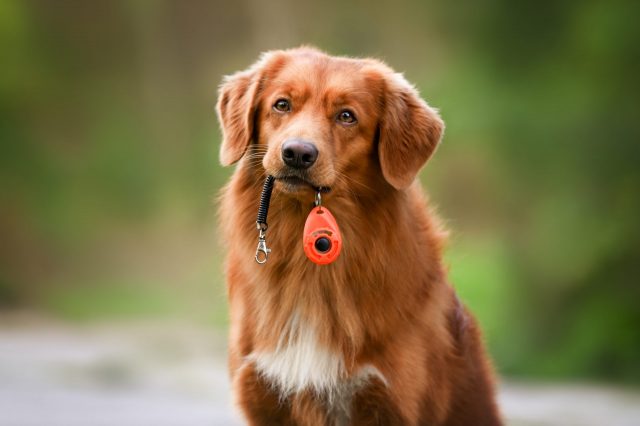“Leave it” is one of the most valuable cues we can teach our dogs. It can save them from eating something harmful, from chasing a car or stealing your steak. It’s so important that most dog trainers teach it in puppy and/or beginner obedience. However the easy version of leave a cookie in mom’s open hand or on the floor of the training room is a far cry from what we expect our dogs to do in real life: leave a sprinting cat or a filet mignon.
So how do you strengthen your dog’s leave it?
First, let’s lay out what your dog’s “leave it” should look like:
- You ask your dog to leave an object alone by saying, “Leave it.”
- Your dog turns away from said object and makes eye contact with you.
- Your dog does not return to or look at the object.

It’s the last part that is hard for most dogs to get. Instead, your leave it probably looks like this:
- You ask your dog to leave an object along by saying “leave it.”
- Your dog turns away from said object and makes eye contact with you.
- After a split second “glance,” your dog receives his reward (praise, treats, etc.) and then immediately looks at the object you told him to leave and/or moves toward it.
Your dog isn’t really leaving that object, his mind is still on it, he is just glancing at you because he knows he gets rewarded for that, and then goes back to what he really wants. that object!
Luckily, there is an easy fix for this, but it will take time.
Increasing Duration of Leave It
You are going to start by backing up a few steps. So, break out those treats (you’ll see why in a minute) and get your clicker out if you use one.
- Go back to having a treat in your open hand and ask your dog to leave it. DON’T CLICK/MARK AS SOON AS HE TURNS AND GIVES YOU EYE CONTACT.
- Instead, try to count to “one one thousand” in your head – if your dog keeps eye contact, now mark and reward! Or did he look back at the treat in your hand?
- Chances are, he looked back at the treat.
- That’s okay. Say nothing and wait. When he looks back at you, try to count to “one” just a tad bit longer than the look you were originally getting. Now click and reward.
TIP: This may take a few back and forth head swivels from your dog before he tries a longer eye contact. If he dives for the treat, just close your hand and wait.
When he finally gets a reward, reset. If you were able to say “one one thousand,” try for “two one thousand.” If you were able to say “one” try for “one two.”
See what we are doing? You are building up your dog’s ability to stay away from the object once you ask him to leave it.

Continue until your dog can give you eye contact for a count of 10. From there, you can increase duration without your dog having to keep eye contact – in other words, he can do other things, he just can’t go back to that treat in your hand. This is important since you aren’t going to expect your dog to never look away from you again after you say leave it.
Upping The Temptation
Things like a cat running, other dogs, bikes, etc., are much harder for your dog to leave than a treat he gets every day. You are going to need to make it easier at first and not expect your dog to leave it and never come back to it the first time (unless you really reinforced leave it prior, which most of us don’t do because you can’t control when a cat will come running across your path).
To make it easier you can:
- Add distance
- Block from view (he can still smell the steak and smell/hear the cat, but it’s easier if the visual isn’t there)
- Have higher value rewards
Again, you will build up the duration as your dog gets better with these distractions.

Remember, until your dog’s leave it is strong, don’t set him up for failure. Don’t leave your dinner on the coffee table and assume your dog will leave it while you leave the room for ten minutes. Have a car chaser? Don’t let him off leash in the street – that mistake could cost him his life.

